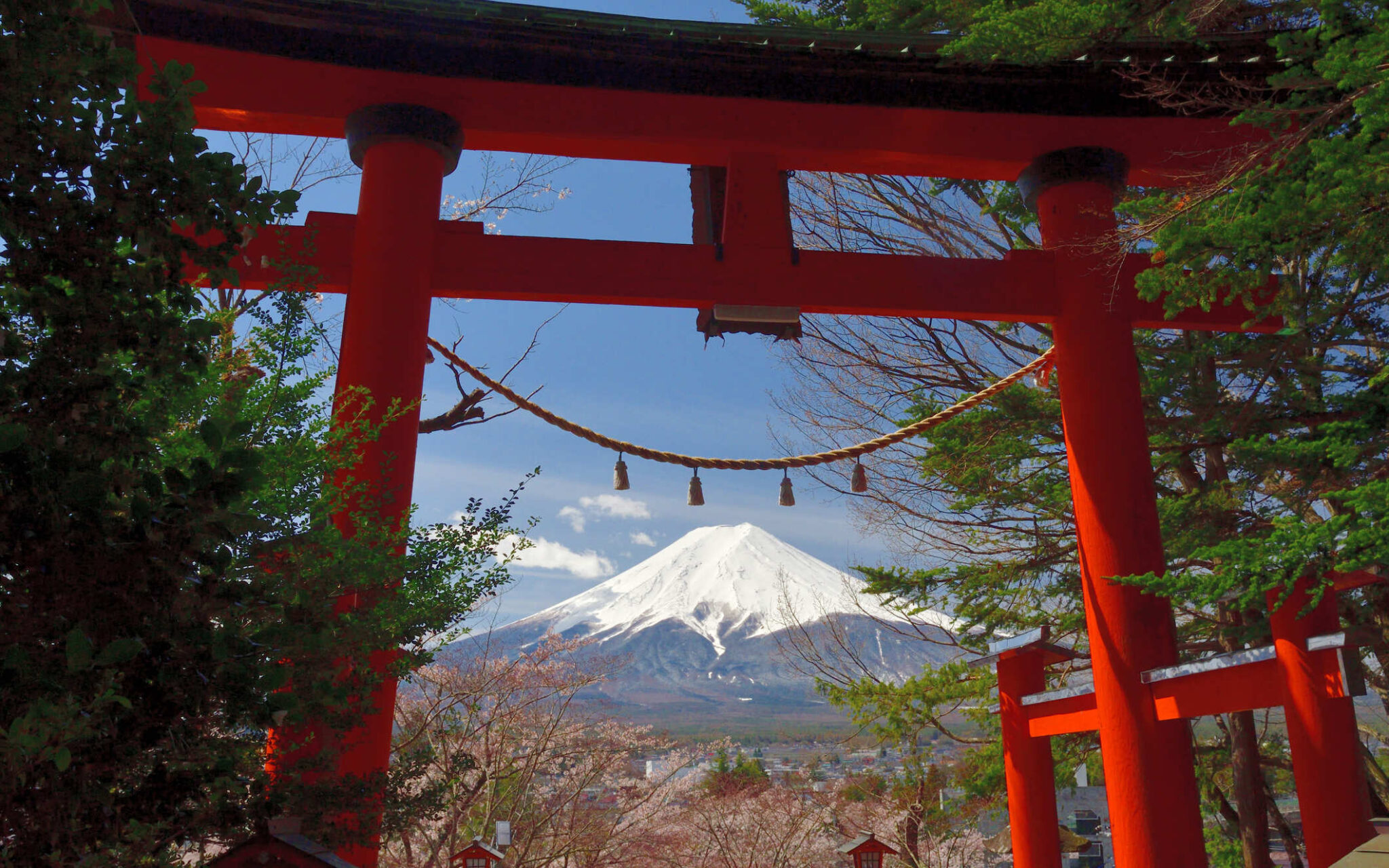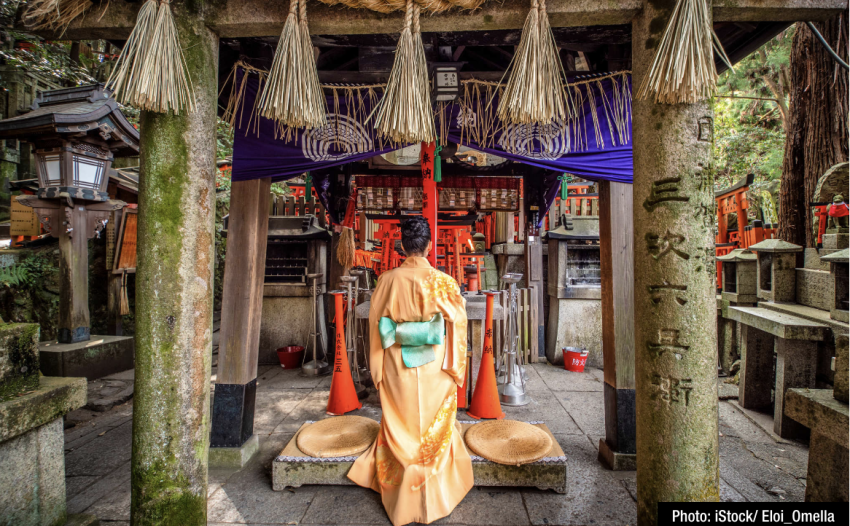Jinja (shrines) are everywhere in Japan—more than 100,000! They’re not hard to spot. The entryway to a shrine is marked by a large torii (gate). This is in contrast to Buddhist temples that do not have torii gates. Once you pass through the torii, you’ll know you’re in a sacred space. But what kind of sacred space? And what do all the structures and markings mean?
With almost 2,000 years of history, there’s too much to cover in one post, but we’ll give you enough to make a shrine visit a little more interesting. Of course, even a casual visit with no prior knowledge can be rewarding. Shrines are relaxing and quiet places full of nature, like trees and rocks. Just a quick stroll around can have a calming effect on anyone.
Armed with a little knowledge, however, your visit could take on much more importance. It is a sacred space, after all.
Shrines house gods

Japanese shrines are places of worship for Shinto spirits called kami. Shinto is often referred to as animistic or a kind of nature worship. Followers of Shinto, the native religion in Japan, believe that kami exist in everything: in natural elements like rocks and trees, inorganic and artificial things and even in people.
Ancestors, mountains (like Mount Fuji) and even natural phenomena and weather like wind and rain can be kami. Shrines are typically placed nearby where people can worship them.
The Buildings at a shrine
Click here to read more.
© GaijinPot Take our user survey and make your voice heard.
Take our user survey and make your voice heard.















14 Comments
Login to comment
wallace
There are no Gods in Shinto, just kami, sacred spirits which take the form of things and concepts important to life, such as wind, rain, mountains, trees, rivers, and fertility.
Humans become kami after they die and are revered by their families as ancestral kami. The kami of extraordinary people are even enshrined at some shrines.
The Sun Goddess Amaterasu is considered Shinto's most important kami.
Shinto does not require adherents to follow it as their only religion. People practice Buddhism at the same time.
starpunk
And two of the '10 Commandments' which have their ideals embraced in most (monotheistic) religions are:
Love your neighbor as yourself. That means you don't discriminate against others who look at God (or anything) differently than you do. Let God/Allah/Jah/Great Spirit/Brahman/etc. do the judging.
You shall not steal. Televangelists, are you listening?
These ideas and more are encapsulated in Christianity, Judaism, Islam, Baha'ism, Sikhism, Vedanta Hinduism, Zoroastrianism, Ojibwa religion (they have 21 precepts!), so much more. Every religion has its true devotees who walk the walk as well as the hypocrites and fanatics.
Some of those '4000' or so are really the Supreme Being with various names. Of course, not everything that people worship is God or is even divine. The ancient Greek and Roman gods aren't real. Elvis Presley and George Harrison are mortals. They lived, made history. They are dead. That's all.
starpunk
And two of the '10 Commandments' which have their ideals embraced in most (monotheistic) religions are:
Love your neighbor as yourself. That means don't discriminate against others who look at God (or anything) differently than you do.
You shall not steal. Televangelists, are you listening?
These ideas and more are encapsulated in Christianity, Judaism, Islam, Baha'ism, Sikhism, Verdanta hinduism, Zoroasterianism,
Vicky
For me, good religion gives hope to people and not discriminates against others or ask for donations.
timeon
Jeremiah, the often invoked argument of monotheistic religions: "my imaginary friend is better than yours". Among the 4,000 or so gods, only the one I believe is the real deal, the others are of course fake. And religious people somehow do not see any problem in that.
TokyoLiving
If I didn't believe in God I would be Shinto..
Jeremiah
Practical information here for sightseers. For those seeking God, nothing of substance. Why worship the creation (“…rocks and trees, inorganic and artificial things and even in people…”) rather than the Creator?
virusrex
Lots of nice Shrines to visit in every ward of Tokyo. Not only the usual ones popular with the tourists (Like Asakusa jinja or Meiji Jingu) but also smaller ones that have their own appeal like the Nezu Jinja or the Sengaku-ji can become a nice memory worth the time needed to visit them. Many times I have been tempted to begin a goshuinchō to collect Shrine stamps.
wallace
japancat
The very strange thing is your comment. There are 90 million followers of Shinto.
japancat
Strange thing is....most Japanese people do not know much about Shinto or how to offer, bow, clap and pray properly at a Shinto shrine.
Legrande
The komainu referenced in the article hint at the origins of the Yayoi culture and people.
starpunk
It seems like the Shinto is a bonafide 'nature worship' or pantheistic religion as opposed to these silly new age movements that sprang up in the late 20th century in the West. The real deal.
You don't need to believe in a particular religion to appreciate the culture, history, artistic aspects of houses of worship like this. Churches, mosques, synagogues, Buddhist temples, Hindu temples, Sikh shrines, etc., all - thru their locations, setup, architecture, etc. reflect the various ways man has and does look at God, other deities, spirits throughout our history and all over the world.
Jennifer L Taylor
I love this! Can you please tell us more?